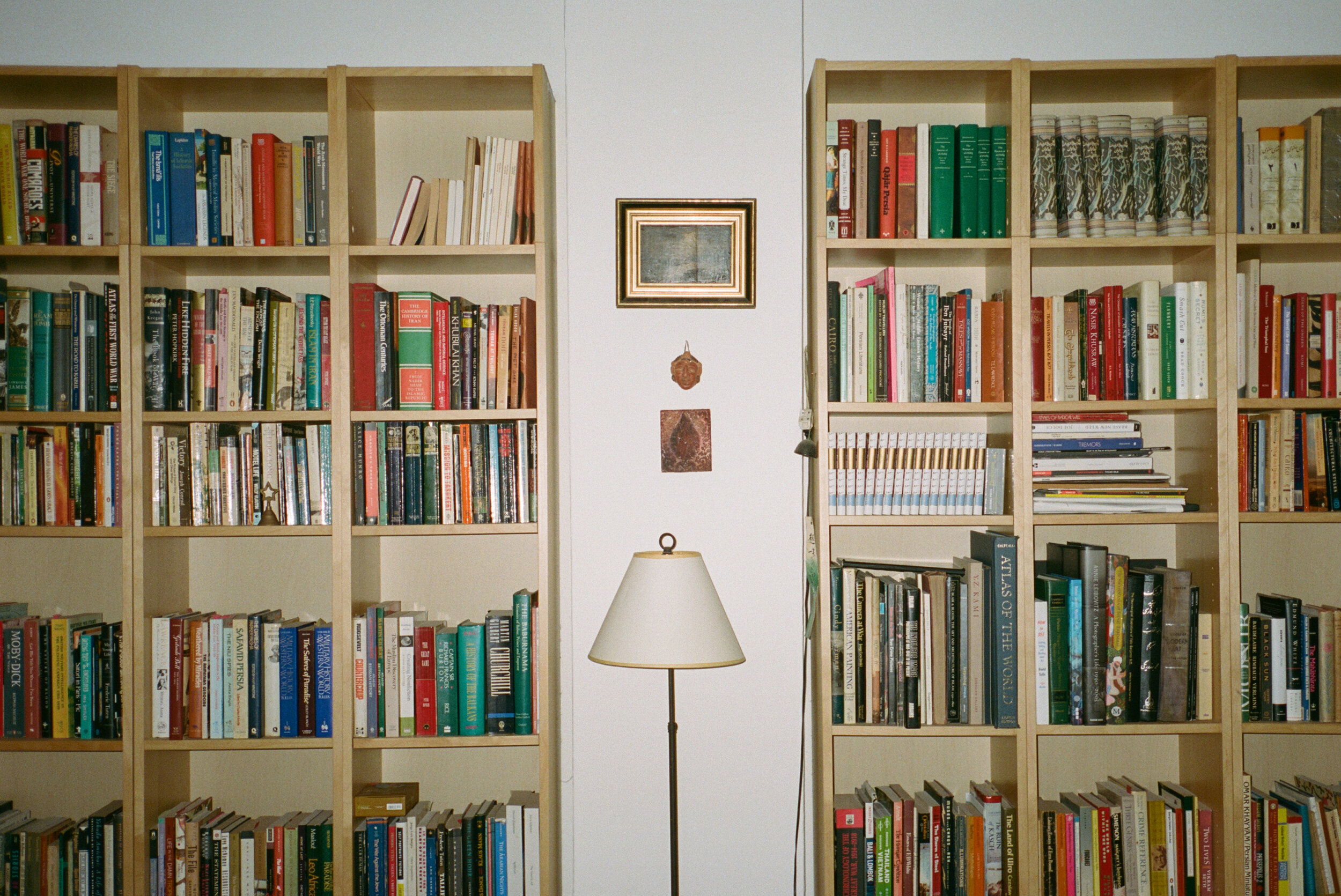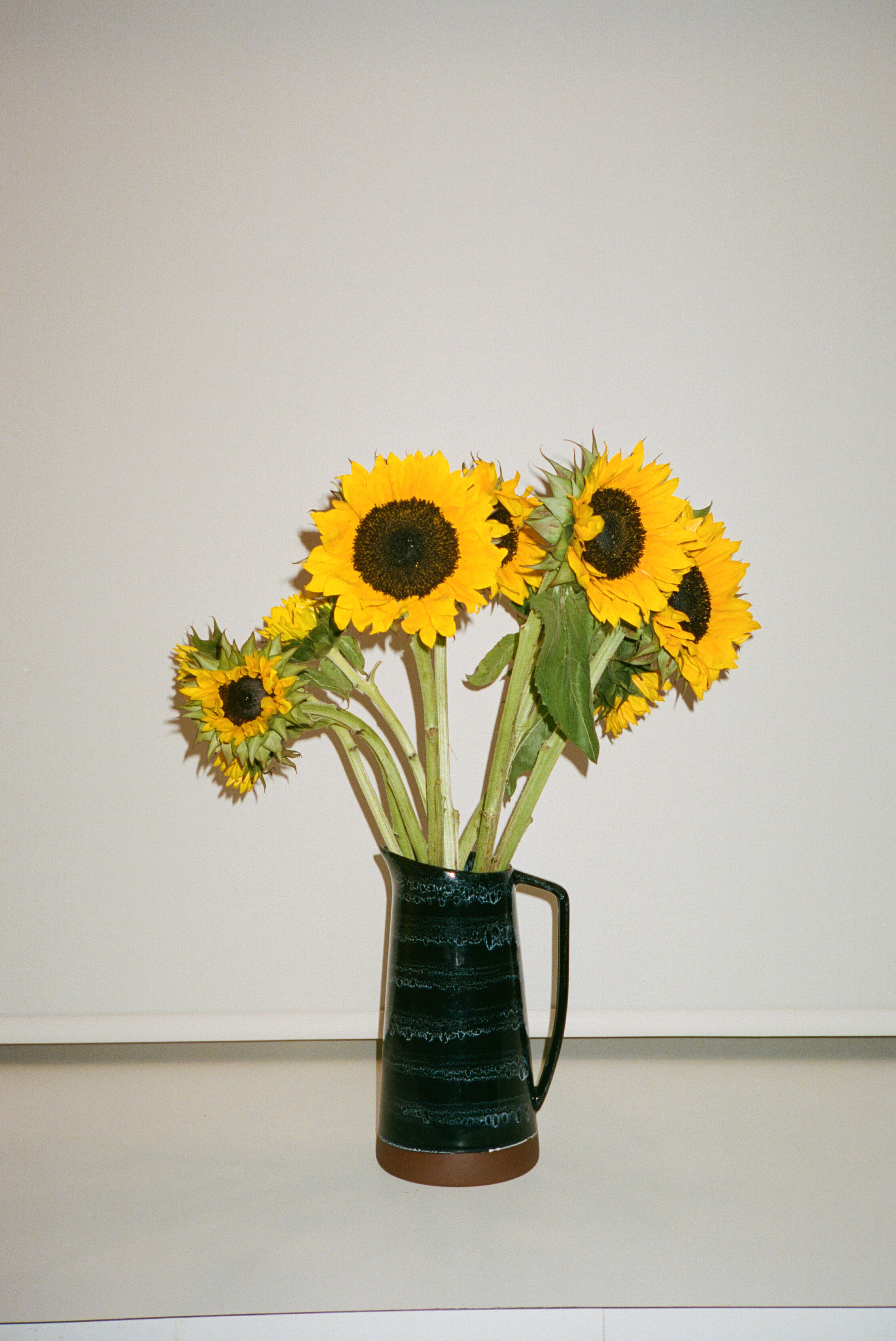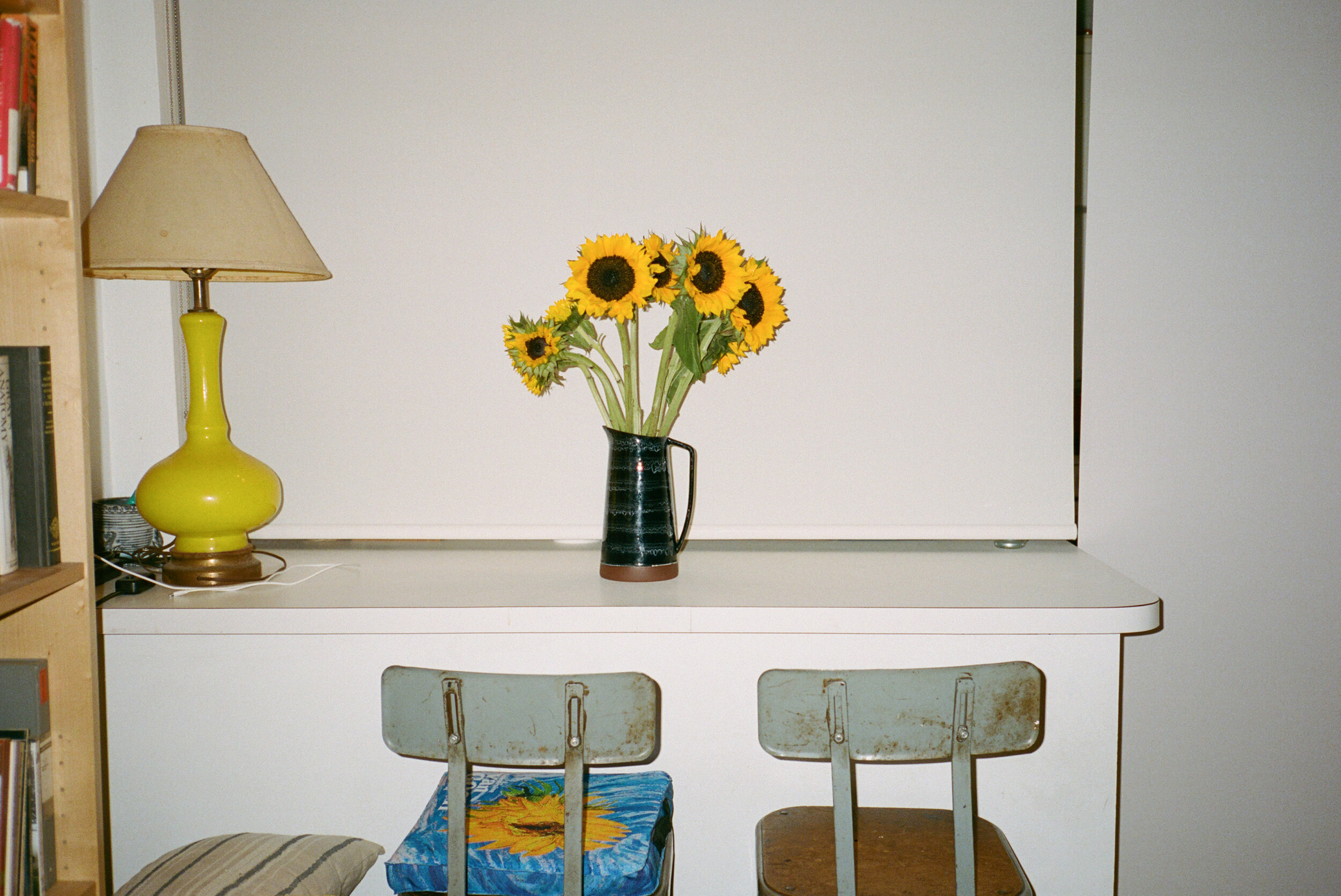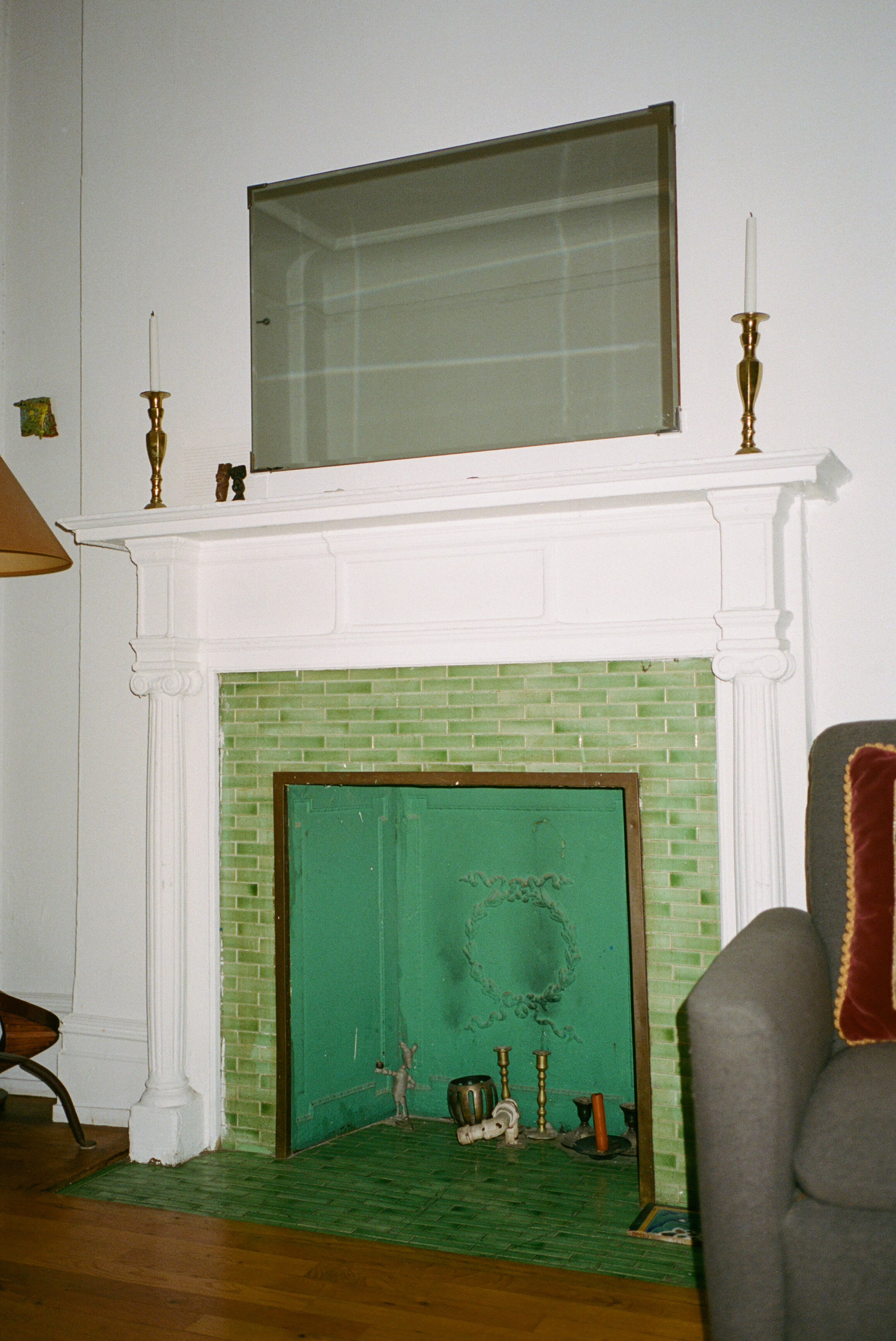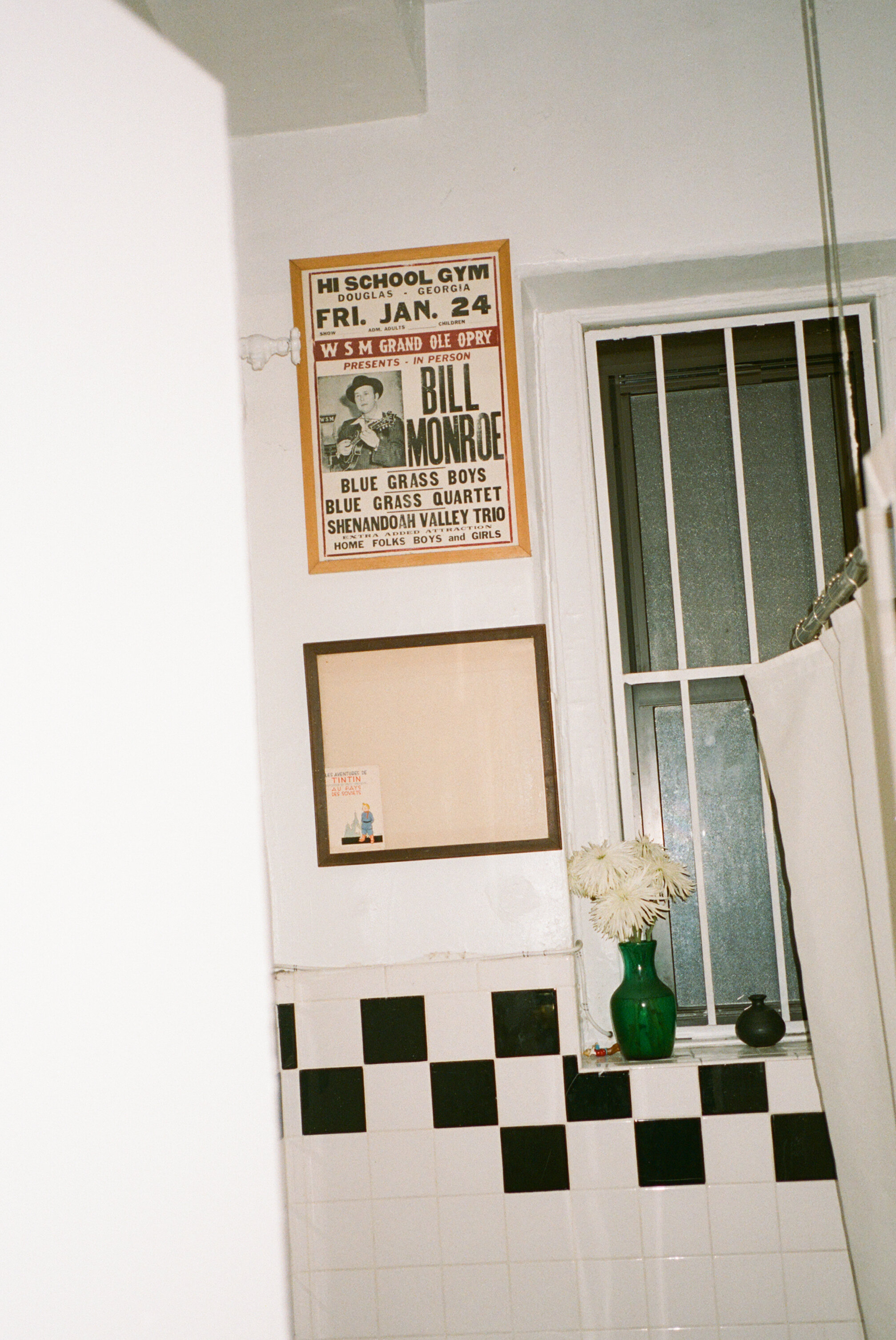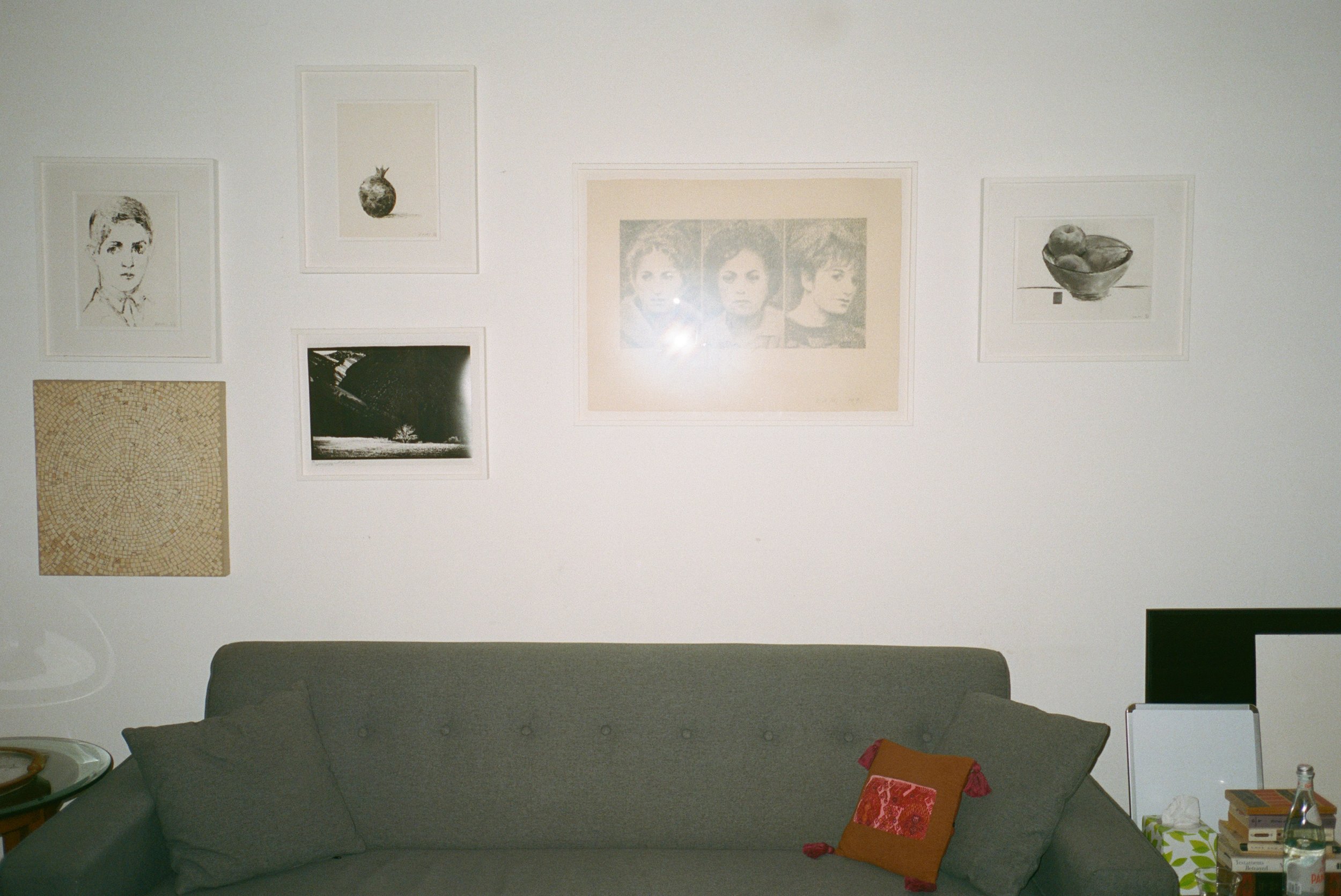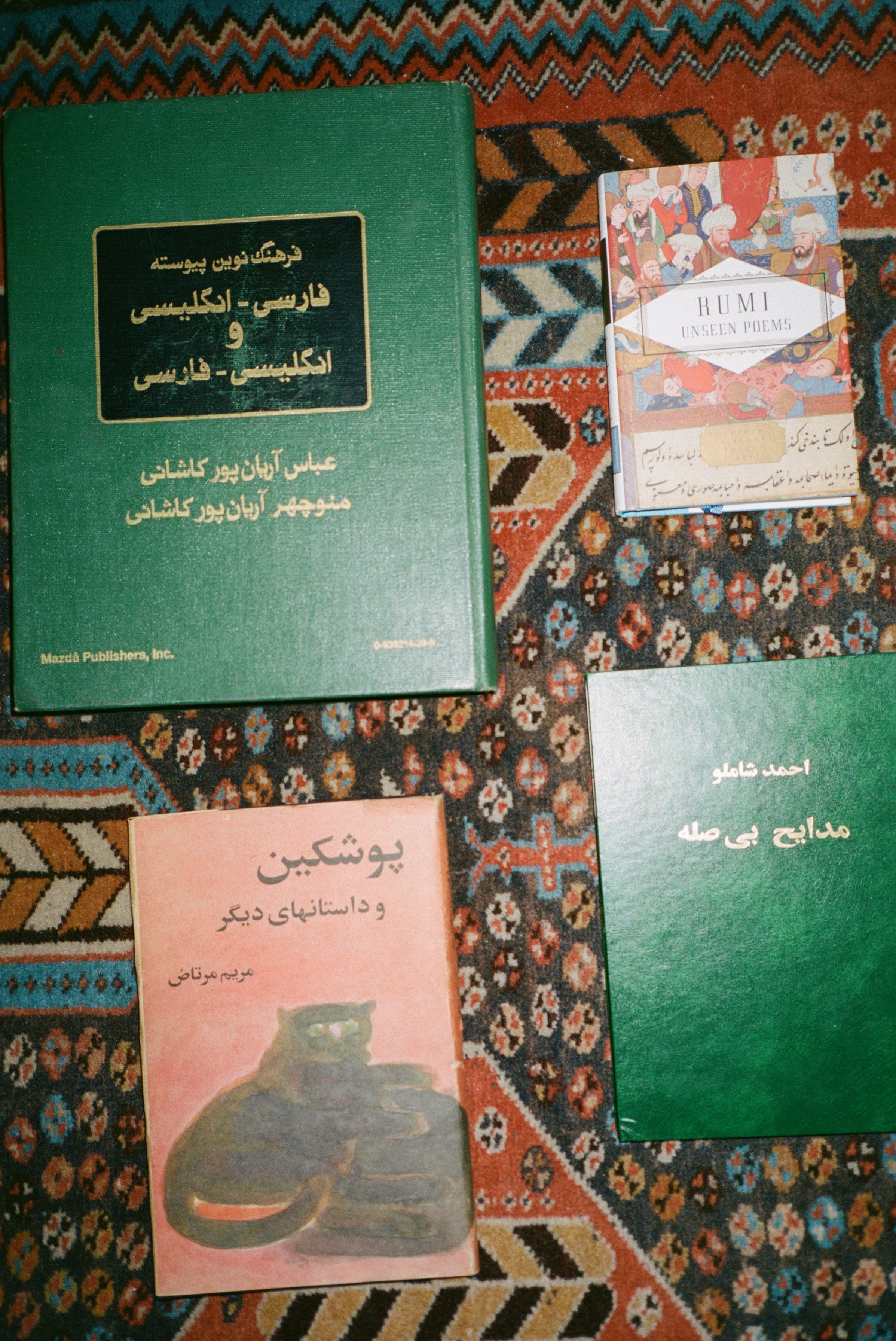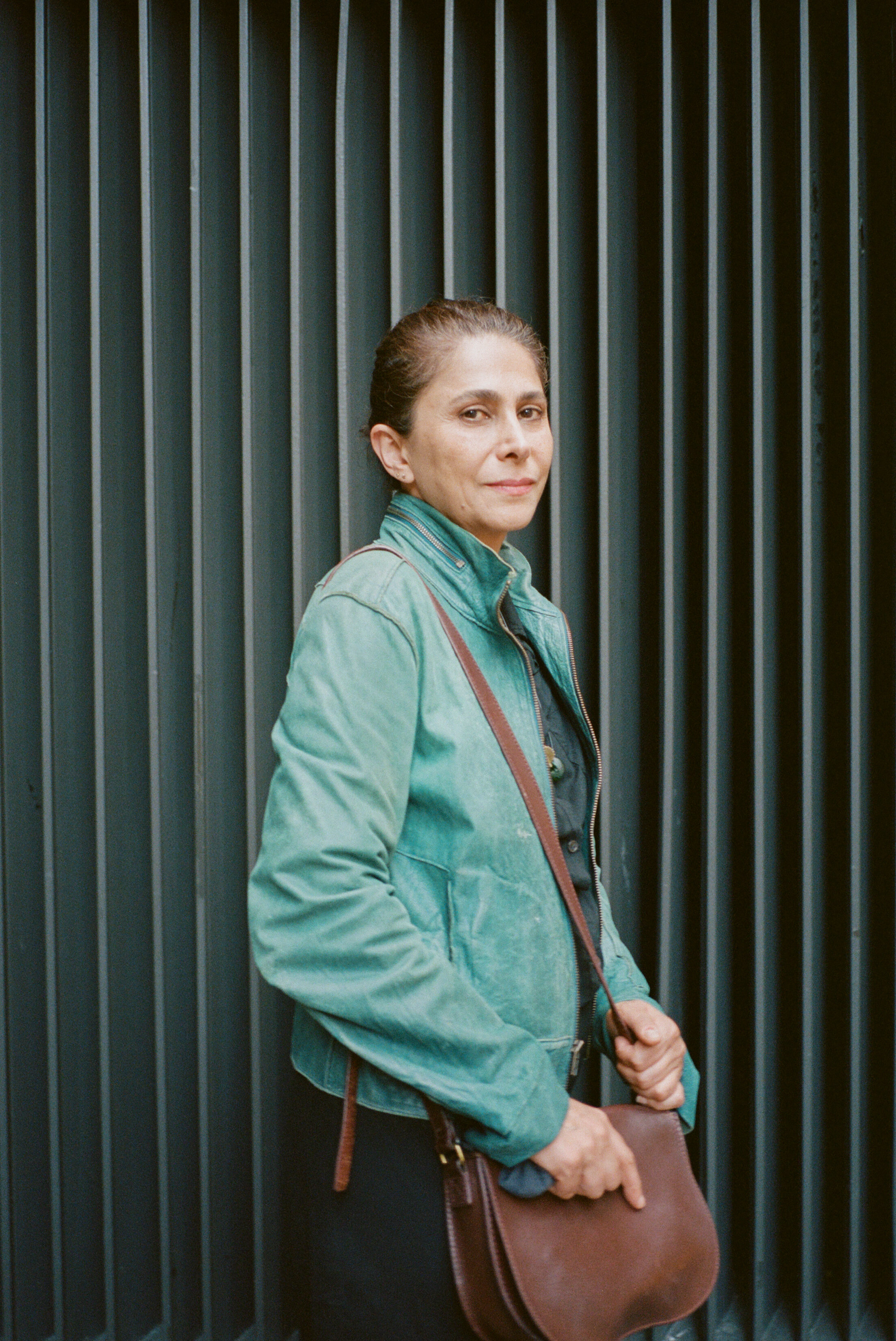Maryam Mortaz is a woman who sees herself as “a mother, a daughter, and a person who loves to write and help others.” Across her work as a therapist, writer, mother, and translator who has parsed the great Persian poet Rumi’s work, her thoughtful disposition shines through as much as her vibrancy for life does. Read on for her meditations on her childhood in Tehran, the challenging and fruitful decade in NYC that shaped her, her approach to psychology, and more.
♫ Listen to maryam's playlist | ⌨ maryam's last google search
on her morning routine
My morning starts quite early when it is still dark out. I slowly drink my coffee while caressing my cat and watching the quiet street through the window of my home office in Midtown Manhattan. Then I write for a while at my desk before reading the news. I write anything that comes to mind—perhaps about a dream or an idea for a short story or just daily journaling. Around 7am, I go for a swim, which is a habit that I have kept for the past thirty years. Except, of course, during the pandemic. By 9am, I am ready to virtually receive my first client of the day.
on her upbringing in tehran
I was born in Tehran, Iran, and lived there until I was 29. I always have two images of Tehran: the one before the revolution and the one after. The former image is short and ends before I turned 10, though it still registers strongly in my memory. I had a good childhood; I was not a good student because I was so daydreamy, but I liked walking back from school through beautiful old gardens with my brother and sister. Summertime was the best; the outdoor swimming pool in Niavaran Park, eating our cheese cucumber sandwiches for lunch under the shadow of old willow trees, and spending time in the park’s beautiful library before coming back home and biking until dusk.
The later image is that of the revolution followed by eight years of war with Iraq. That was a truly dark time. Everything was suddenly banned by Islamic revolutionaries and the new regime. No biking, no sitting with boys in the same school, no playing chess or music, no holding parties or kissing or dancing. Nothing. Women’s hijabs were mandated, and school auditoriums became places of prayer. Freedom was gone, and terror ruled our days and nights. However, we slowly learned how to have a double life. An underground world where we could dance and hold quieter parties was shadowed by the fear of the country being bombed at night. Iran was under severe sanctions, and we didn’t have oil for heating or adequate food, so I ate a lot of potatoes and eggplant pancakes. I was filled with anger, and it was only later, when I was a teenager, that I realized this revolution had also been a cry for freedom and equality.
““I was six years old when I understood that I wanted to be a writer—maybe because of the stories my grandmother used to tell me; she was a great storyteller. I had started to read even before starting school. I loved books, and I couldn’t go to sleep until I had finished one. I started writing a novel when I was sixteen and finished it when I was seventeen. I wish I’d saved that manuscript! My interest in psychology appeared around the time of junior high school. My father was always against my wish to be a writer, warning me that I wouldn’t be able to support myself financially. His words saddened me but made me thoughtful. Psychology was a good fit for my personality. I was very compassionate towards people and curious and concerned about their thoughts and feelings.””
on her identity
I see myself as a human being, a mother, a daughter, a person who loves to write and help others. I have difficulty seeing myself as an Iranian-American, perhaps because my father and his family were immigrants from the Georgia/Armenia region of the former Soviet Union in Russia and moved to Iran. I can be anything anywhere, really. It is a sweet, sad feeling of freedom that I live with every day.
on building her life in nyc
When I moved to New York City in 1999, I simply wanted more freedom. At the time, I was establishing my career as a writer and working on a collection of short stories while also practicing clinical psychology part-time. It was probably the most joyful time in my life. There was a lot of turmoil in Iran, especially vis-à-vis writers, though, so I made a decision right then and there that it was time to leave, and I did. I didn’t even stay long enough to see the publication of my first and only book of short stories, Pushkin and Other Stories. I left Tehran with one suitcase and $1,700 to my name, and it was a bit of a miracle getting that tourist visa to America.
I chose New York City nearly randomly—I was a fan of The New Yorker, even though my English was quite weak. When I arrived, I didn’t know anyone. I was absolutely a stranger and invisible. I unexpectedly met the man who would become my husband just five days after arriving. In just two weeks, I found a job in a coffee shop and started to learn English. Later, I got my MFA in English when I was pregnant and tried my hand at writing in English when my son was 6. As life went on, I returned for a graduate degree in Mental Health Counseling, which was more or less what I had studied in Iran. I had wide experience working with families and veterans of the Iran-Iraq war and people involved with substance abuse. Writing and therapy somehow completed each other and became components of the totality of my life.
““Some people perceive that life is all about being young and youthful. Or that change, as you grow older, is not all that possible. But change is the nature of existence, and it arrives at any time or chapter of a lifetime. Stepping into my fifties, I feel far wiser, but I still have that playful, lively young girl who wants to take risks inside of me. I still like to see the world, learn different languages, or even learn how to sail. I am so excited to write again soon and make new friends. My soul is ageless.””
on her approach to her therapy practice
One has to love what they do. I enjoy helping others, and I don’t have a specific method. I practice a certain existentialist approach to find and convey meaning in life and wisdom through, for example, generational trauma. Some of my clients want more structure, coaching, and direction. That, too, can be done. My goal is to make the client comfortable during their session. Their trust in me is invaluable. I want them to feel that I have love for them and care about their sensitivities, vulnerabilities, and stories. I want them to understand how important it is to me to help them.
on advice for those aspiring to become therapists
I have been very curious about my own psychological pain. I have felt that to be a good therapist, I should open myself to its world, so I went through an extended journey with therapy that lasted nearly a decade. I had enormous respect for my therapist, and seeing him once a week was the best and most insight-producing part of my life. Knowing your own vulnerabilities and fears is very important before becoming a therapist. It is important to be constantly aware and mindful of transference and countertransference in a session with your client. Therapy is a journey for both the therapist and the client. I learn a lot from those who come to me.
on reflecting on her forties
The decade of my forties, which recently ended, was the most difficult and challenging time of my life, yet also the most productive. It was the time that I found out about my own buried trauma and my vulnerabilities; it was the time I faced one of the most important losses of my life. 2009 was a year of occasional panic attacks and much fear. Fear of how to support myself and how to be present for my little child. I found an amazing therapist in Nathan S. who helped me be patient with my losses. I learned so much from him. We became friends and stayed friends until the last days of his life in November 2020. It was the decade I went back to school and when I started translating Rumi. Rumi became my mentor—a fellow sufferer who created, arguably, the most monumental compendium of poetry the world has ever known. Yes, this was indeed a long decade! When I look back at it, I feel proud of myself that I didn’t give up.
on translating rumi
Translating happened out of the blue. It was 2009, and I was a Persian tutor. My then-separated husband came to me and said that one of his friends, a well-known American author, wanted to learn Persian because he was writing a biography of Rumi, the 13th century mystic poet. I loved Rumi (whom in the Persianate world we call Mawlana Jalal ad-Din of Balkh), and I accepted the job. Little by little, I started to translate the old Persian texts and poems for him. During that time, I realized there were still many beautiful poems of Rumi’s that had not been translated, so I suggested that we translate them together. That was a difficult year for me, but this project turned into a truly joyful act. Our book, Rumi: Unseen Poems, was finally published by Knopf in 2019. I really like the challenge of translation. Do I want to translate other books or more poetry? I am not sure. I have many unfinished stories from the last two decades that I want to finish first; I also think about my many clients that I want to help find joy and tranquility in their lives. That’s more of a priority.
on what she’s reading and watching
Reading poetry motivates me to write, so I try to read it almost every day. There are many great poets that I love: T.S. Eliot, Emily Dickenson (I learned English through reading her poems), Rumi, of course, Anna Akhmatova, and Margaret Atwood, whom I adore as a novelist and poet. I have a few books on my desk waiting too, so I plan to read Italo Calvino, for instance. My favorite books? There are many! All the books of Graham Green. Certainly Márquez. The Dostoyevsky of my teenage years. Marguerite Yourcenar. Some of Roth. When I want to encourage myself to keep moving, I think of Viktor Frankel, author-psychiatrist, who was a Holocaust survivor. His book, Man’s Search For Meaning, tremendously impacted my life. I only watch films on the Criterion Channel because of its impeccable selection.
on how she spends her time outside of work
When I am not working after 7 pm, I cook. Cooking is one of my favorite activities. I do it just about every day and do it with love. I go for a short walk around the park by my place, or I’ll watch a film. Weekends mean the farmers market—buying fresh flowers and produce, more cooking, doing laundry, and meeting or inviting a friend over for dinner.
on balancing the components of her life
It sounds complicated! But I have a method. When I am doing psychotherapy, I am a therapist. When I am cooking or walking or swimming, I am writing in my head, and I feel that I am a writer. When I was raising my son, I was a mother. Everything in its place, one at a time. Since my son began college, I have had more time to travel into the interiors of my own imagination and think of finishing certain stories percolating in my head. Motherhood can be hard work; I am glad that I was patient and enjoyed my child for 18 years.
on her beauty and health routines
My routines are swimming, eating healthy homecooked food, and creating art. I don’t have much of a makeup routine, to be honest. I use Neutrogena SPF 15 during the winter and Neutrogena SPF 70 in the summer. Sometimes I might use concealer or black eyeliner. I like everything to be natural. The first time I did my nails, they looked so pretty that it almost made me dysfunctional for two days! I couldn’t touch anything. It was a distraction. Too much attention to hair, nails, or things like Botox is just time and money-consuming. I don’t have time for it.
on her style
I like simple and elegant styles. I like dresses and skirts beneath my knees, cashmere sweaters that I won’t buy any more since moths ate through my favorites some years back. I like jeans and simple leather jackets. My favorite brand is A.P.C.. If I find enough time, I visit them twice a year. They are a bit pricy, but it is hard to find your favorite things for cheap.
maryam’s favorite spots in new york
Food shopping: Union Square Farmers Market and Eataly.
Restaurants: Sushiva in Hell’s Kitchen, Osteria al Doge in Times Square, Cafe Mogador in the East Village, Periyali in Chelsea. And a number of Mexican and Ethiopian restaurants.
Café: Hamilton’s in West Harlem, where I sometimes meet up with my son’s dad. Or The Honey Well around the corner, where we might sometimes have a mojito or a palomino instead of coffee.
Book store: The Strand; I can spend hours there.
Park: Hands down, Central Park.
Museum: The Metropolitan Museum has no competition.
images by clémence polès


